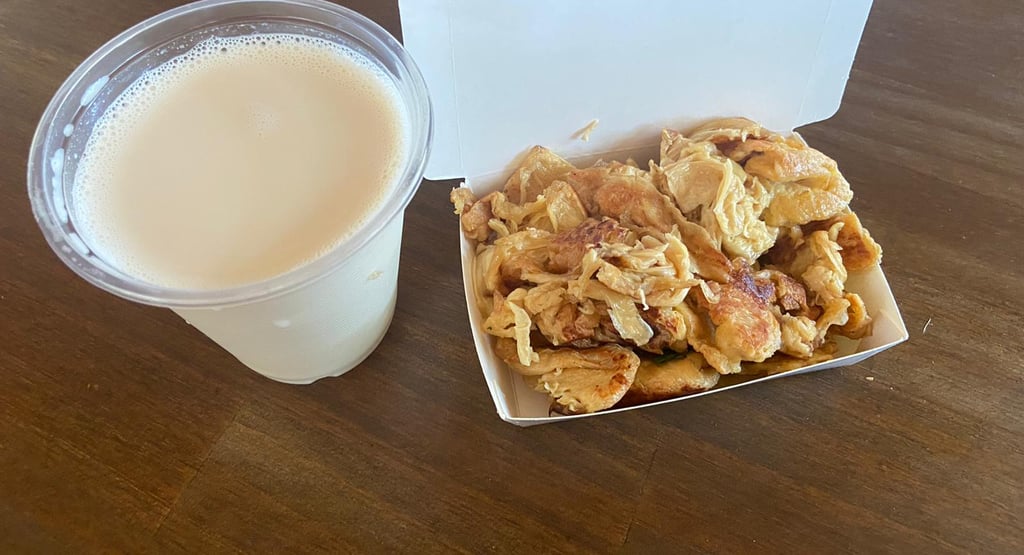Food
Food shared tastes best


Taiwanese Food: A Melting Pot That Feels Like Home
Taiwanese food. Well, that’s a spectacular story all on its own — a true gastronomic melting pot that reflects the island’s complex history, geography, and cultural diversity.
As we mentioned before, Taiwan is an island smaller than Croatia, but when it comes to food, it’s surrounded by giants. And you know how we say in Croatia, “S kim si, takav si” — you become like those around you. Or, as Americans put it, “You are the average of the five people you spend the most time with.” In Taiwan’s case, its cuisine is shaped by the countries and cultures it has been closest to — and the result is something uniquely Taiwanese.
Heavily Influenced, Deeply Local
The most dominant influence comes from Chinese cuisine — especially the Fujian region. Many of Taiwan’s most iconic dishes, like lu rou fan (braised pork rice) or dan zai noodles, are deeply rooted in Fujianese traditions. The Hakka people, another ethnic group with strong presence in Taiwan, also bring hearty and savory dishes that focus on preserved vegetables, meats, and rice-based recipes.
But Chinese cuisine in Taiwan isn’t just one thing. You’ll find Sichuan hot pots, Beijing dumplings, Shanghai-style braised meats, and Cantonese dim sum.
Then there’s the Japanese influence, which goes beyond sushi and sashimi. Taiwan was under Japanese rule for 50 years, and that left a deep culinary mark. Dishes like katsu (pohanac), ramen, and even bento boxes are now everyday foods. They don’t feel foreign — they’re part of the local taste, much like ćevapi or pizza in Croatia. We no longer think of those dishes as strictly Bosnian or Italian — they’re simply part of our everyday lives. The same goes for Japanese food in Taiwan.
Indigenous Flavors from the Mountains
Taiwan’s indigenous people, who lived on the island long before any colonial power arrived, also contribute to the culinary landscape. In the mountainous regions, you’ll find aboriginal dishes that use wild greens, millet, bamboo shoots, and smoked meats — especially pork. These meals offer a simple, earthy contrast to the more complex flavors of Chinese or Japanese cuisine, and they connect visitors to Taiwan’s ancient roots.
A Southeast Asian Touch
In recent decades, Taiwan has become home to vibrant immigrant communities from Vietnam, the Philippines, Indonesia, and Thailand — and their flavors have become part of the everyday food scene. Vietnamese cuisine, in particular, is very popular. You’ll find pho, banh mi, and spring rolls across the island. It’s kind of like how Leskovački roštilj can be found all over Croatia — not originally local, but deeply beloved and welcomed on every corner.
Taiwanese Food is a Story of Belonging
Taiwanese cuisine is more than just delicious — it’s layered with stories of movement, adaptation, and identity. It reflects Taiwan’s place between worlds, and its ability to welcome, blend, and transform outside influences into something fresh and local. You might taste a bit of Shanghai, a bit of Tokyo, or a bit of Hanoi — but in the end, it all tastes like Taiwan.
The Silicon Valley of Street Food
And today, Taiwan is not just preserving culinary traditions — it’s inventing the future of food. Can be called the Silicon Valley of Street Food, the island is a place for bold new flavors, formats, and food trends. Just walk through any night market, and you’ll see this innovation in action: from teenage entrepreneurs to 80-year-old vendors, everyone’s competing to win hearts with the next big thing — a new drink, a creative snack, a twist on a classic. It was in places like these that bubble tea was born — now a global phenomenon.
